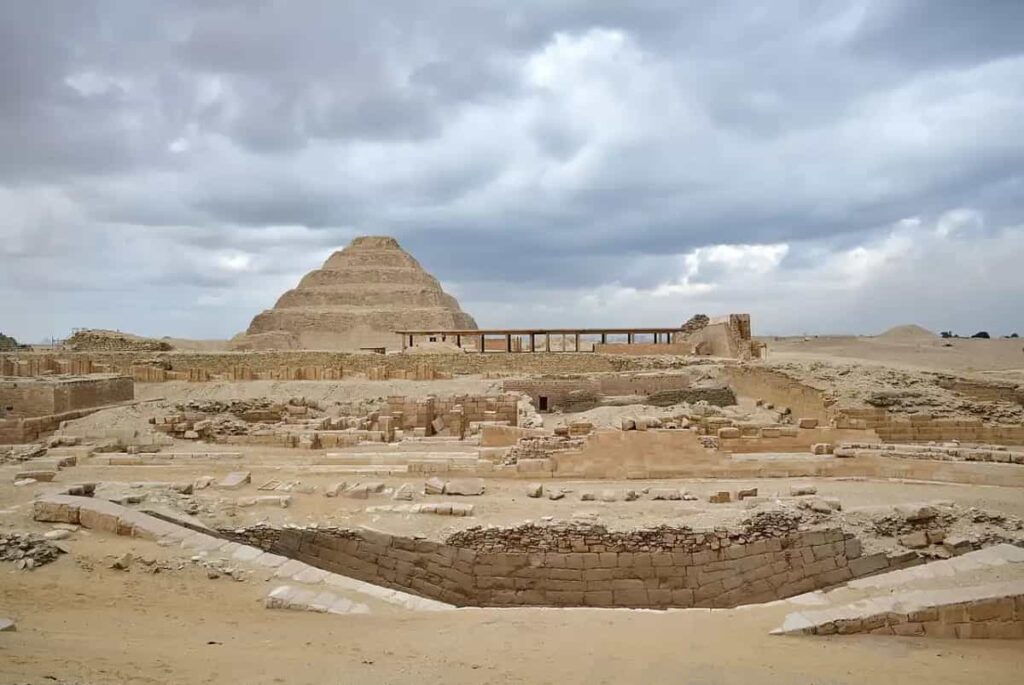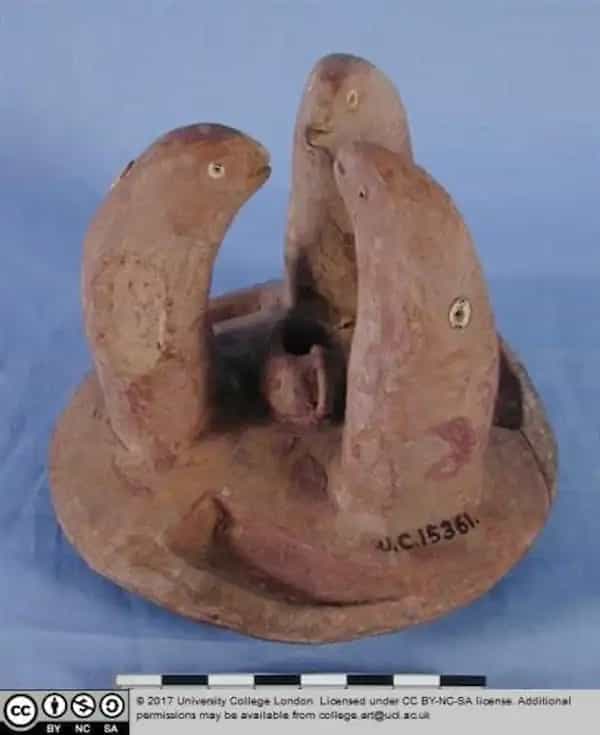On January 19, 1936, British archaeologist Walter Bryan Emery made a fascinating discovery at the Saqqara necropolis in Egypt. He unearthed an artifact during his excavation of mastaba S3111, the burial site of Sabu, a notable Egyptian official who lived during the First Dynasty (around 3000-2800 BC).

This artifact is a concave slate disk with a diameter of 61 centimeters and a maximum height of 10.6 centimeters. It features a central hole measuring 8 centimeters across, surrounded by three extensions resembling “wings” or “lobes” that radiate from the edge. This unique design gives the disk an appearance similar to a “steering wheel” with three broad spokes when viewed from above.
Initially discovered in fragments within the burial chamber alongside Sabu’s skeleton, Emery took great care in restoring the artifact. Today, it is proudly displayed in the Egyptian Museum in Cairo under the title of the Sabu Disk. Notably, it is the only known ancient Egyptian object with such a distinctive lobed shape.

While the First Dynasty produced many large, high-quality stone bowls and plates, as well as finely crafted slate items in Saqqara, none resemble the unique form of the Sabu Disk. This indicates that it was likely a specially made item intended exclusively for Sabu, reflecting his high standing in ancient Egyptian society.
Its precise function remains unclear; however, Emery proposed that it might have served as a type of container mounted on a support, though no remnants of such a support were found. Other theories suggest it could have been a replica of contemporary metal objects or that its delicate nature rendered it impractical for everyday use, relegating it purely to decorative purposes.

More extravagant hypotheses speculate that it could have functioned as a grand triple-flame lamp or a flywheel designed to store rotational energy. Engineers from Airbus examined 3D replicas of the disk and concluded that its aerodynamic features might indicate it was intended as an advanced throwing tool. However, its radial symmetry rules out any potential use as a propeller or turbine, despite claims from some proponents of pseudoscientific theories.
A clay figurine from the Nagada II period (approximately 3500-3400 BC), which is housed in the Petrie Museum in London, bears a resemblance to the Sabu Disk. This figurine features a round disk surrounded by four snakes, three of which have their heads raised around a central round container, while the fourth snake appears to drink from it.

Sabu is believed to have lived during the reigns of Pharaohs Den and Anedjib and may have been Anedjib’s son. He likely served as an administrator or governor of a city or province. When his tomb was discovered, archaeologists found his remains still inside a wooden sarcophagus, positioned on its side in line with the burial customs of the era.
The funerary chamber also contained remnants of Sabu’s possessions, primarily made of metal and stone, including stone tableware and the distinctive disk. Despite its ambiguous purpose, the Sabu Disk holds significant historical importance for several reasons. It showcases the advanced stone craftsmanship that existed during the late predynastic period and the First Dynasty, highlighting the exceptional skills of ancient Egyptian artisans even before the construction of the great pyramids.

